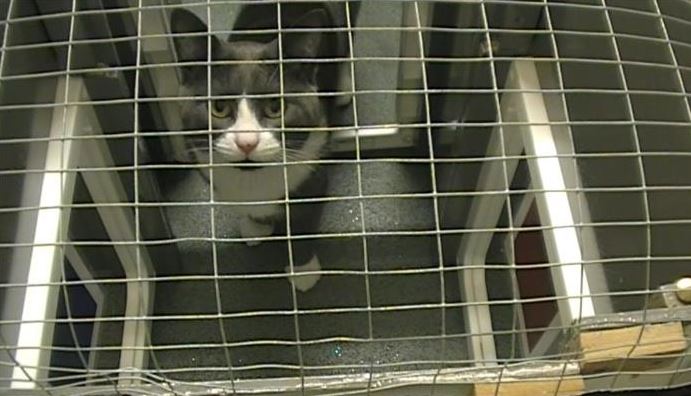Felines have keen smell and vision, so a small study investigated which sense they prefer to use under test conditions – and suggests sight may be more important than smell.
A group of six cats were placed in a maze which had ‘decision’ points – and the cats had to choose which avenue they took based on their preference for using images or smell. They were simultaneously presented with two squares of paper, each containing a different visual and odour cue. One combination of stimuli indicated they would receive a food reward, whereas the other led to no reward.
Once the cats had learned the rules of the game and received food rewards for correctly choosing either the visual stimulus or the olfactory stimulus, the researchers separated the cues (visual versus olfactory) to investigate whether the cats were using their eyes or nose to solve the task.

Credit: University of Lincoln
Four out of the six cats picked the visual cue, over the odor cue, to receive their food reward with only one cat preferring to use its nose and the sixth showing no preference. So it seems that when they had the choice, cats simply preferred the visual signals over the olfactory ones.
Due to the small sample size, it would not be realistic to infer a general preference for cats to use visual over olfactory stimuli when learning the location of food.
Evy Mayes, who carried out the research at the University of Lincoln while she was studying for her Masters degree in feline behavior and is now working at Battersea Dogs&Cats Home, explains, “Up until now we really thought that the sense of smell would dominate how cats view their world, but we are now reconsidering this and also the implications of how we manage them.”
Professor Daniel Mills of the University of Lincoln added, “We live in a complex world and use all of our senses to make sense of it. This is the first time we have asked cats how they operate rather than assumed this from what we know about their senses. Another important finding from this work is the individual variability - different cats had quite fixed preferences, and this may have important implications for their welfare. If there is a cat which has a strong preference for using its nose then simple changes in the smell of the environment might have a big impact on it, whereas, for others it may be insignificant. This work provides a unique insight into the important principles of attending to the needs of the individual rather than the population in general for good welfare.”
Citation: ‘Individual differences in visual and olfactory cue preference and use by cats (Felis catus)’, Evelyn-Rose Elizabeth Mayes, Anna Wilkinson, Thomas William Pike, Daniel Simon Mills Applied Animal Behaviour Science. DOI 10.1016/j.applanim.2015.01.003






Comments